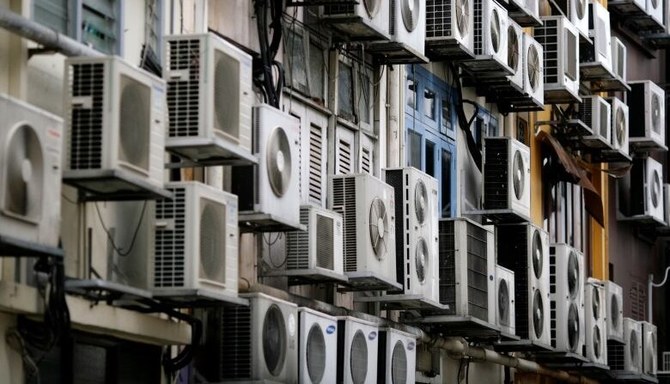Dr. Majid Rafizadeh
The International Day for the Preservation of the Ozone Layer, which is designated by the United Nations General Assembly, will be marked next Saturday. It is important to consider the following issues: What is the current status of the ozone layer, what can we do to further restore, heal and protect the ozone layer, and what lessons can be learned from the unified international efforts that have been carried out in order to address this critical environmental issue?
Every year, the International Day for the Preservation of the Ozone Layer is celebrated on Sept. 16 in order to commemorate the date in 1987 that the Montreal Protocol on Substances that Deplete the Ozone Layer was signed. The Montreal Protocol should be hailed as one of the most successful international treaties or agreements in human history. This is partially due to the fact that the treaty was ratified by 198 countries, all members of the UN. In addition, the Montreal Protocol should be used as an example for other treaties and global initiatives when it comes to taking action to combat or prevent environmental catastrophes.
After scientists began issuing warnings about the state of the ozone layer and its depletion in the 1970s and 1980s, world leaders in both the environmental and political arenas came together and in 1985 they signed the multilateral international and environmental agreement known as the Vienna Convention for the Protection of the Ozone Layer. This treaty played a key role in reducing the production of chlorofluorocarbons, which were instrumental in the depletion of the ozone layer. The Vienna Convention for the Protection of the Ozone Layer ultimately laid the framework for the Montreal Protocol, which aimed to phase out a number of chemicals, including chlorofluorocarbons and hydrochlorofluorocarbons, which were contributing to a hole in the ozone layer above Antarctica. According to the treaty, the parties to the protocol recognized the fact that “worldwide emissions of certain substances can significantly deplete and otherwise modify the ozone layer in a manner that is likely to result in adverse effects on human health and the environment. Determined to protect the ozone layer by taking precautionary measures to control equitably total global emissions of substances that deplete it with the ultimate objective of their elimination on the basis of developments in scientific knowledge.”
It is worth noting that the ozone layer protects life on our planet because it absorbs harmful ultraviolet radiation that comes from the sun. As with many other environmental issues, the problem with the ozone layer was caused by human actions. The main cause of the depletion of the ozone layer was human-made chemicals including propellants, halocarbon refrigerants, solvents and foam-blowing agents, such as chlorofluorocarbons, hydrochlorofluorocarbons and halons. The depletion of the ozone layer caused humans to be exposed to damaging ultraviolet rays. As well as leading to skin diseases, cataracts, cancer and impaired immune systems, these harmful rays also cause harm to plants and marine ecosystems. The landmark Montreal Protocol and the global efforts to address this environmental issue paid off, as the ozone layer began to recover. Some scientists believe that, by 2040, the ozone layer covering most of the world will be fully healed to the level it was before human-made chemicals caused its depletion nearly 50 years ago. But our job is not totally done. We should continue conducting scientific research on the ozone layer and eliminate any new substances or chemicals that could damage it. We should also continue to work on phasing out hydrofluorocarbons, which are coolants often used in refrigerators and air conditioners.
Nevertheless, the Montreal Protocol is a success story in addressing one of the world’s most important environmental issues. Several lessons can be learned from this landmark agreement and ought to be applied to combating the other environmental catastrophes that the world faces. The most important lesson is that all countries, governments and industries came together, alongside the scientific community, in order to address this critical issue.
Secondly, multilateral agreements are more likely to be effective in terms of their enforcement and implementation and they are more likely to be firm and durable if they are endorsed by all UN member states, rather than being imposed by a few powerful countries.
The third great thing about the Montreal Protocol is that it is constantly being updated with new amendments based on scientific studies and findings in order to improve the situation. For example, the Kigali Amendment to the Montreal Protocol came into effect in 2019 and it aims to phase out other ozone-depleting substances, particularly in cooling systems. These lessons can be applied to the current climate change crisis, which poses several critical threats and has already inflicted crippling losses across the world. One of the most important issues in the climate crisis is that it is impacting almost every sector and every person and animal on Earth. Tackling the climate crisis is not only about protecting and preserving biodiversity and the planet, but it is also related to protecting our future and that of the coming generations.
In conclusion, the Montreal Protocol is one of the great success stories of multilateralism, showing how governments, scientists and industries can come together to address and resolve a critical environmental issue. This ought to be an example for fighting other environmental crises, such as climate change and global warming.







